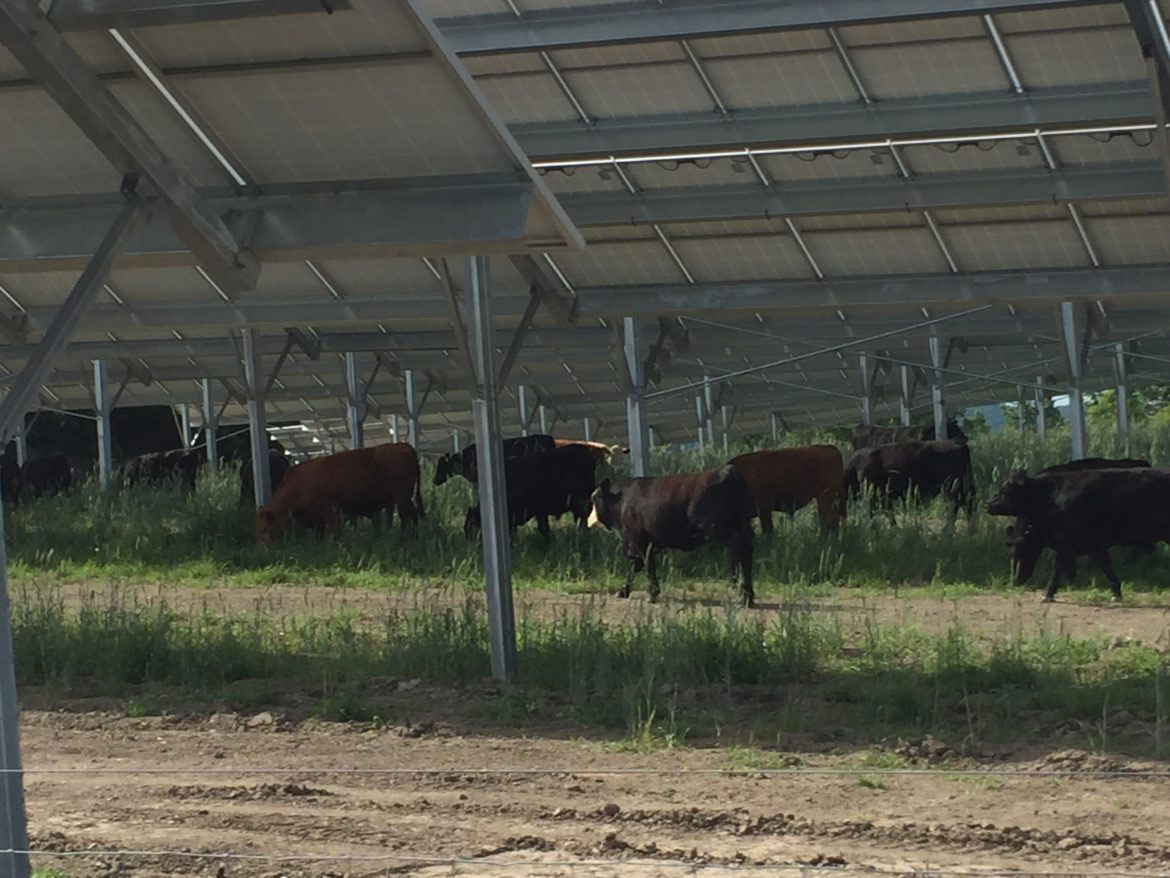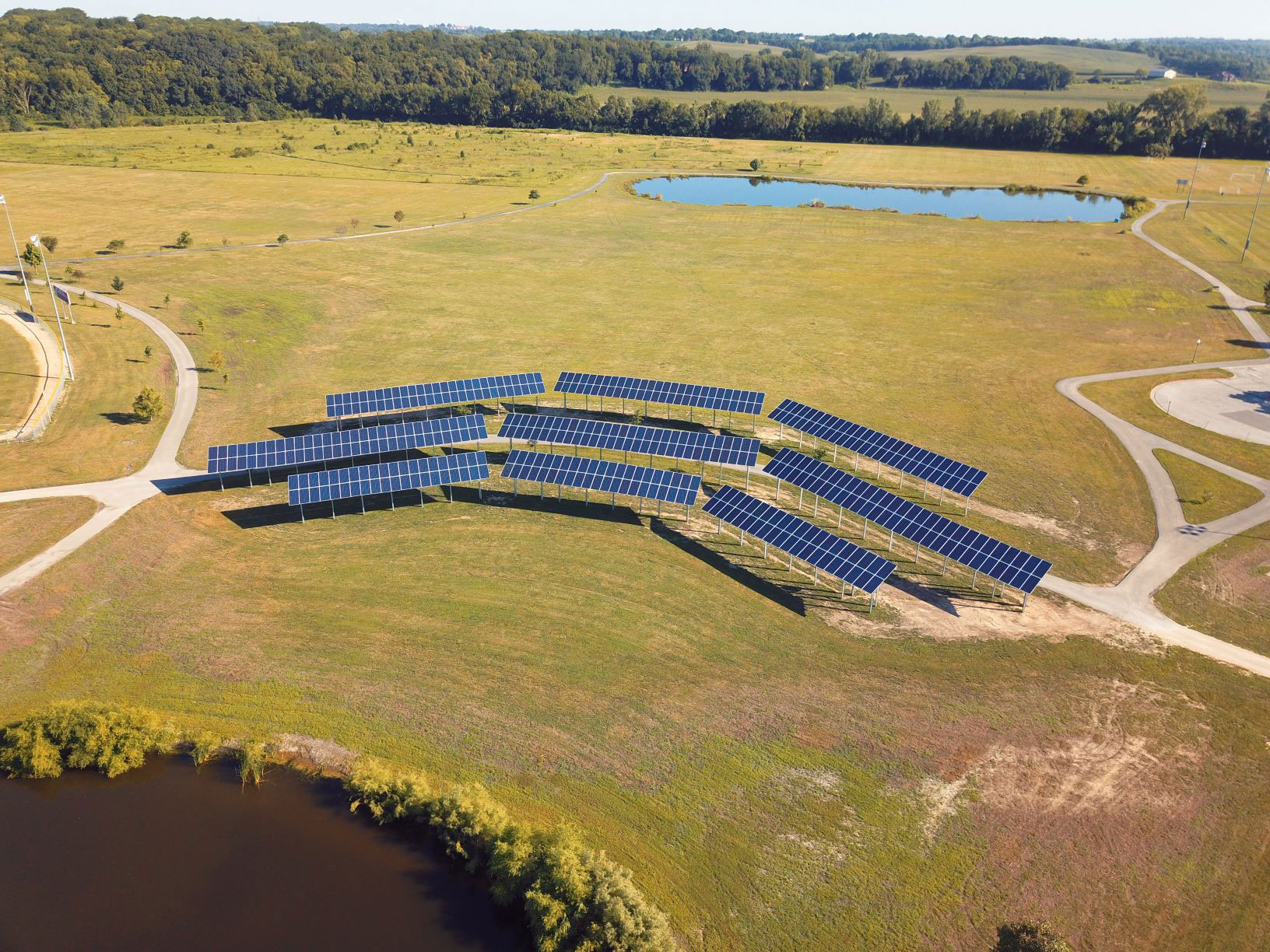When businesses in Ohio decide to go solar, they have the unique advantage of having a PV A-team to power the project. For example, consider the city of Brooklyn’s four-megawatt landfill project in Cuyahoga County. Located 20 miles south of Cleveland, this award-winning project is advancing the city toward its commitment to power itself with 100 percent renewable energy by 2050. With accolades from Solar Builder’s
Project of the Year Award, the system leveraged
RBI Solar’s landfill expertise in Ohio’s largest landfill solar plant.
Situation: Complex deal puts pressure on solar construction
The brownfield site was the perfect choice for
Cuyahoga County sustainability leaders who wanted to ensure strong community support for the solar plant. Ohio already has relatively low-cost electricity, so it was important to make cost-efficient choices from the start. Installing a solar facility on a landfill meant the city wouldn’t have to lease expensive real estate for its clean solar generation. But there were many complex factors that came into play:
- The deal was a complicated, three-party agreement: The city of Brooklyn owns and leases the power to its local municipal utility — Cleveland Public Power — which then resells the electricity to the county.
- The purchase power agreement that was set up through a third-party investor was restricted by a rule that limits the county to 10-year agreements; that created lengthy delays to make the 20-year solar deal work.
- But the administration revisions to the tax code meant that the deal had to be finalized in six weeks to meet tax deadlines and allow the county to make a prepayment for the electricity at the time of commissioning.
Players: Regional partners team for success
Bringing together local PV companies on this project highlighted the state’s solar muscle. Not only did Ohio-based developer
Enerlogics Solar employ 80 percent of the workforce from within the state, it also sourced the project’s racking and module products from within Ohio. Additionally, RBI Solar is headquartered in Cincinnati and manufactures all of its racking there, while
First Solar boasts a 1.9-MW thin-film module production plant in Ohio.
Cuyahoga Landfill Solar Project – 4 MW
Synergy between the partners helped to power the project to its award-winning success. RBI Solar is one of First Solar’s ecosystem partners, trained to install its frameless thin-film modules. CS Energy and RBI have also teamed up on many projects — including multiple landfill systems across the country.
Challenges: Project contends with winter construction and landfill safety
By the time RBI Solar and its EPC partner
CS Energy moved into construction, the teams had to contend with winter conditions and uber-tight schedules. As one of the leading racking companies to procure ballasted systems in the country, RBI brings to bear nearly 200 MWs of experience with landfill systems. Together with CS Energy, RBI navigated cost, schedule, and landfill safety flawlessly.
CS Energy is also known for its landfill solar experience with more than 130 MWs of similar projects under its belt.
“We were impressed with the caliber of this Ohio-based solar team,” says CS Energy Kevin Magayah, Vice President of Business Development.
“Knowing that RBI Solar was designing and building the racking structure brought additional assurance that we would hit our construction targets safely,” he said. “Building solar on landfills is tricky business. Having RBI on our team gave us the confidence that we would have a reliable, cost-effective solution that would not disturb the landfill cap.”
Action: RBI brings its landfill expertise into play
RBI Solar put its skill and experience to the test. Its landfill experts worked on the system from the beginning, designing the ballasted structure, building the racks, sourcing the precast concrete foundations, and ensuring the complete mechanical installation during the wet winter months.
Because it is known for its transparency in the racking design process, RBI’s team presented the logistical considerations involved in choosing the right construction approach guiding the partners toward a more cost- and time-effective solution to limit the weight impact on the landfill membrane.





